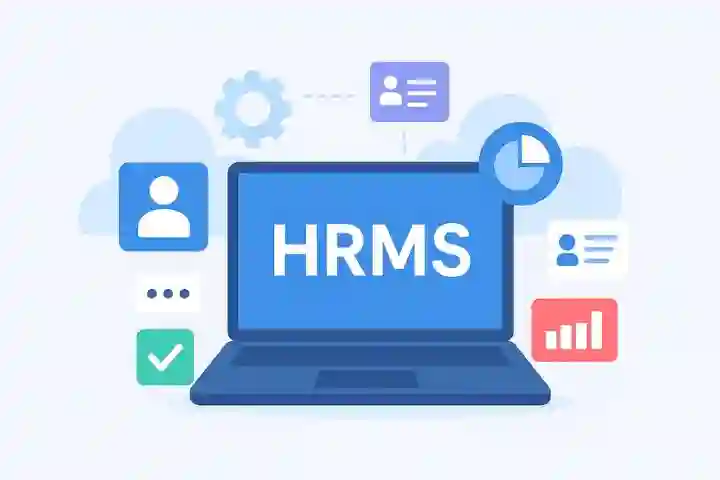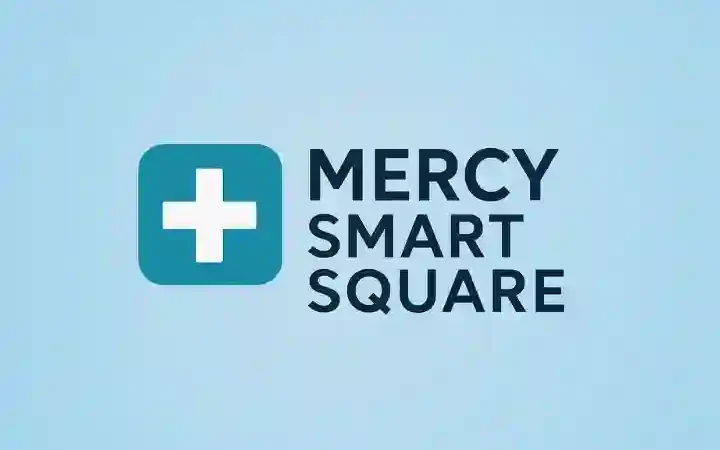iProcess HRMS: The Ultimate HR Management Solution for Modern Businesses

iProcess HRMS is an advanced Human Resource Management System designed to streamline and automate HR processes within organizations. It offers a centralized platform for managing employee data, payroll, attendance, recruitment, and performance evaluation. With its user-friendly interface and cloud-based accessibility, iProcess HRMS helps HR teams save time, reduce errors, and ensure compliance with company policies and labor regulations.
By integrating automation and analytics, iProcess HRMS enhances workforce efficiency and transparency. Employees can access self-service tools for leave requests, payslips, and updates, while management gains real-time insights for better decision-making. It’s a complete solution for modern, digital-driven HR management.
Table of Contents
Introduction to iProcess HRMS
In the modern business world, managing human resources efficiently is no longer a luxury—it’s a necessity. Organizations across industries are turning to digital HR management platforms to streamline their employee data, automate processes, and enhance overall workforce productivity. One such advanced system that has gained widespread recognition is iProcess HRMS.
iProcess HRMS stands for Integrated Process Human Resource Management System. It’s a comprehensive solution that simplifies HR functions, from payroll and attendance to recruitment and performance management. In this complete guide, we’ll explore what iProcess HRMS is, how it works, its key modules, benefits, and why it’s an essential tool for today’s HR departments.
What is iProcess HRMS?
iProcess HRMS is a cloud-based Human Resource Management System designed to centralize and automate the various aspects of employee management. It enables organizations to store, track, and manage employee information seamlessly while ensuring accuracy and compliance.
Instead of juggling multiple spreadsheets or disconnected tools, HR departments can rely on iProcess HRMS to manage all HR operations under one unified system. From hiring to retirement, it covers the entire employee lifecycle—making HR management more transparent, efficient, and data-driven.
Purpose and Vision Behind iProcess HRMS
The vision behind iProcess HRMS is simple: to create a seamless bridge between people, processes, and performance. The system is designed to eliminate manual tasks, reduce paperwork, and enable HR professionals to focus more on strategy rather than administration.
The purpose of developing iProcess HRMS lies in empowering organizations to build efficient HR ecosystems. With automation at its core, iProcess helps streamline complex workflows, ensures compliance with labor laws, and offers deep insights into workforce trends—all of which contribute to smarter business decisions.
Key Features of iProcess HRMS
iProcess HRMS comes equipped with an impressive range of features that cover every HR function imaginable. Some of its standout features include:
1. Employee Self-Service (ESS)
The ESS module empowers employees to manage their own profiles, apply for leaves, view payslips, update information, and track attendance without HR intervention. This reduces dependency on HR staff and promotes transparency.
2. Payroll Management
Payroll processing is automated, accurate, and compliant with tax laws. The system handles salary calculations, deductions, reimbursements, and generates detailed pay reports effortlessly.
3. Attendance and Leave Tracking
Integrated with biometric systems or digital time trackers, iProcess HRMS monitors attendance, work hours, and leave balances in real-time. It simplifies shift scheduling and ensures error-free attendance records.
4. Performance Management
Performance evaluation becomes data-backed with KPI tracking, performance reviews, and appraisal management features. Managers can set goals, measure achievements, and plan development initiatives effectively.
5. Recruitment and Onboarding
From posting job vacancies to screening applicants and onboarding new hires, the recruitment module automates every step of the hiring process, ensuring a smooth and professional experience for candidates.
6. Training and Development
This module helps track employee learning progress, assign courses, and evaluate training outcomes. It fosters continuous learning and career growth.
7. Analytics and Reporting Tools
iProcess HRMS provides real-time analytics dashboards that generate visual reports on attendance, attrition, performance, and payroll. These insights help in strategic workforce planning.
8. Data Security and Compliance
The platform ensures data encryption, role-based access, and adherence to data privacy laws. HR data remains secure from unauthorized access or cyber threats.
How iProcess HRMS Works
iProcess HRMS functions as a centralized digital HR hub, where all employee-related information and processes are interconnected.
It works through a cloud-based architecture, allowing employees and managers to access the system anytime, anywhere. HR administrators can configure workflows, manage user permissions, and customize dashboards based on organizational needs.
The system uses automation and integration to reduce manual intervention. For instance, attendance data is automatically synced to payroll, ensuring accurate salary calculations. Similarly, performance evaluations feed directly into promotion or bonus decisions, ensuring fairness and transparency.
Modules in iProcess HRMS
The platform is built on a modular structure, allowing organizations to select and deploy features based on their specific needs.
1. Core HR Module
Handles basic employee data such as personal information, job details, and employment history. It forms the backbone of the HRMS ecosystem.
2. Payroll and Compensation
Automates the salary computation process, including allowances, deductions, bonuses, and compliance filings like tax or provident fund contributions.
3. Time & Attendance
Integrates with biometric or digital time systems for accurate attendance monitoring, overtime calculation, and shift management.
4. Recruitment and Onboarding
Covers end-to-end recruitment—job posting, application screening, interview scheduling, and onboarding documentation.
5. Performance Management
Facilitates periodic appraisals, goal tracking, and 360-degree feedback mechanisms to nurture employee growth.
6. Learning and Development
Helps in tracking employee skill enhancement and managing internal training programs.
7. Exit Management
Simplifies offboarding by automating clearance, documentation, and exit interviews while ensuring compliance.
Benefits of Using iProcess HRMS
Adopting iProcess HRMS can transform the way HR departments function. Here are the key benefits:
- Efficiency: Automates repetitive HR tasks, freeing time for strategic initiatives.
- Accuracy: Reduces human errors in payroll, attendance, and compliance.
- Transparency: Provides real-time visibility into HR operations.
- Employee Empowerment: ESS module allows employees to manage their profiles independently.
- Compliance: Ensures adherence to legal and organizational regulations.
- Data-Driven Insights: Advanced analytics help in workforce planning and forecasting.
- Scalability: Suitable for both small businesses and large enterprises.
Why iProcess HRMS Stands Out
Unlike traditional HR systems that operate in silos, iProcess HRMS offers complete integration across departments. Its user-friendly interface, customizable workflows, and mobile accessibility make it a preferred choice for modern businesses.
Moreover, the system supports multi-location operations, enabling centralized control over distributed teams. It also integrates with ERP and CRM platforms, creating a unified business ecosystem. Its adaptability and scalability ensure it evolves with organizational growth.
Industries That Use iProcess HRMS
iProcess HRMS caters to a wide range of industries, offering flexibility to adapt to different operational requirements:
- Healthcare: Manages large workforces with rotating shifts and compliance needs.
- Education: Tracks faculty and staff attendance, payroll, and training.
- Manufacturing: Monitors labor productivity, shifts, and payroll for multiple plants.
- IT & Software: Handles project-based employee structures and remote teams.
- Retail: Manages store-level staff scheduling and compensation.
- Banking & Finance: Ensures accuracy, compliance, and audit readiness in HR processes.
Its cross-industry adaptability makes it a truly versatile HRMS solution.
User Experience and Interface
A major highlight of iProcess HRMS is its intuitive and clean dashboard design. Users can access all essential functions—from payroll to performance—through simple navigation menus.
The platform’s mobile-responsive interface allows HR managers and employees to access data on the go. Notifications, approval workflows, and updates are all streamlined through real-time alerts, ensuring smooth coordination across teams.
Data Security and Compliance
Data security is a top priority. The system employs encryption protocols, two-factor authentication, and role-based access control to safeguard sensitive HR data.
It also ensures compliance with international standards such as GDPR and local labor laws, minimizing the risk of data breaches or regulatory violations. Regular audits and secure cloud hosting enhance its reliability and trustworthiness.
How to Access iProcess HRMS Login Portal
Accessing is simple and secure:
- Visit the official iProcess HRMS login portal (usually provided by your organization).
- Enter your registered username and password.
- Complete multi-factor authentication if required.
- Navigate to your personalized dashboard for HR tasks like attendance, payslips, and leave requests.
If you face login issues, you can reset your password using your registered email or contact your HR administrator. The login portal is compatible with most modern browsers and mobile devices.
Implementation Process of iProcess HRMS
Implementing it involves several well-defined steps to ensure smooth transition and adoption:
- Needs Assessment: Identify HR pain points and define key objectives.
- System Setup & Customization: Configure modules based on organizational policies and structure.
- Data Migration: Transfer existing employee data securely into the new system.
- Training & Onboarding: Conduct sessions for HR staff and employees to familiarize them with the platform.
- Go-Live & Monitoring: Launch the system officially and monitor its performance, making adjustments as necessary.
This structured approach ensures a seamless implementation with minimal disruption.
Common Challenges and Their Solutions
Like any digital transformation initiative, HRMS adoption may face challenges. Here’s how it helps overcome them:
- Challenge: Employee resistance to change.
Solution: Provide training and emphasize system benefits like transparency and self-service access. - Challenge: Integration with legacy systems.
Solution: iProcess supports API integrations, ensuring smooth data synchronization. - Challenge: Data migration issues.
Solution: The platform includes tools for secure, error-free data import and validation. - Challenge: Security concerns.
Solution: Advanced encryption, multi-layered authentication, and compliance controls protect data integrity.
By addressing these issues proactively, organizations can achieve a successful HRMS rollout.
Future
The future looks promising as it continues to evolve with technology. Artificial Intelligence (AI), Machine Learning (ML), and predictive analytics are shaping the next generation of HR systems.
Upcoming features may include AI-driven talent acquisition, employee sentiment analysis, and automated career pathing. With increasing remote and hybrid work environments, mobile-first and cloud-based solutions will dominate HR management.
iProcess HRMS is well-positioned to adapt to these advancements, offering organizations smarter, faster, and more connected HR solutions.
Conclusion
In conclusion, iProcess HRMS is not just an HR software—it’s a strategic business tool designed to transform how organizations manage their people. With its powerful features, data-driven insights, and user-friendly design, it enhances both HR efficiency and employee satisfaction.
By automating manual processes, ensuring compliance, and providing actionable analytics, it helps businesses build a stronger, more agile workforce. As companies continue to embrace digital transformation, platforms like iProcess HRMS are set to become the cornerstone of modern HR ecosystems.
FAQs
Q1. What is iProcess HRMS used for?
iProcess HRMS is used to automate and manage HR operations like payroll, attendance, recruitment, and performance management.
Q2. Is it cloud-based?
Yes, it is primarily a cloud-based system, allowing secure access from any device.
Q3. Can employees access it from mobile devices?
Absolutely. The platform supports mobile and web access for convenience.
Q4. How secure is iProcess HRMS?
It uses advanced encryption, secure logins, and compliance with GDPR and labor laws to ensure data safety.
Q5. How much does iProcess HRMS cost?
Pricing depends on the organization’s size, selected modules, and deployment options.
Also read : AnalyzingMarket Com






